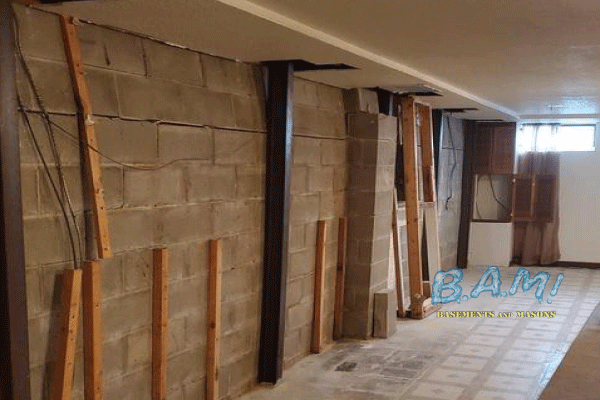Some Known Questions About Best Basement Waterproofing.
Some Known Questions About Best Basement Waterproofing.
Blog Article
The Ultimate Guide To Best Basement Waterproofing
Table of ContentsSome Known Incorrect Statements About Best Basement Waterproofing Best Basement Waterproofing Fundamentals ExplainedNot known Facts About Best Basement WaterproofingThe 5-Minute Rule for Best Basement WaterproofingBest Basement Waterproofing - An Overview
uses excavation strategies towards all-time low of the framework's foundation. entails eliminating wetness after it has gotten in the basement. AdvantaClean's qualified professionals and service technicians will find the water resource. If wall surface or slab fractures exist, we will infuse polyurethane and epoxies into the fractures and secure the compromise, stopping more moisture from entering.
If there's condensation on the exterior of the foil, you have high humidity in your basement. If the foil has condensation on the within surface area (next to the wall surface), the dirt around your house might be normally damp from a high water table or inadequate soil drainage.
You can waterproof just your indoor wall surfaces, which may solve the problem. Once they dry, they stick permanently to concrete and stonework walls.
Some Of Best Basement Waterproofing
Concrete water resistant layers can not be used to previously repainted surfaces; examine the label. Known as densifiers, they are ideal just for walls that haven't been painted or secured.
You comb, roll, or spray it on much more thickly one gallon covers simply 75 square feet, not the 300 square feet normal with standard paint. Water-proof paint is fine for do it yourself application. You can apply it over repainted surfaces, and paint over it once it's cured (one gallon costs $37).
It can set you back $10,000 to $15,000, depending on the work required. Exterior waterproofing entails digging deep into all around the house to the complete depth of the foundation wall surfaces, after that setting up a water-proof coating or membrane topped by drain panels.
A cellar without waterproofing is kind of like that. Your cellar doesn't desire to go with a rainstorm without proper security simply as much as you do not want to.
6 Simple Techniques For Best Basement Waterproofing
However if you've done your research study, you would certainly know there are two kinds of waterproofing: inside and outside. It can obtain perplexing what they both mean, which one's a better investment, and what will actually keep the water out. Don't fret, we placed with each other this blog to quickly define both methods for you and review the their explanation pros and disadvantages of each.
Exterior waterproofing is a waterproofing approach that involves securing your home from the exterior. The structure walls are then cleansed, sealed, and covered with a waterproof membrane layer or sealer.

The Main Principles Of Best Basement Waterproofing
It's an extra engaged process that needs excavating up your backyard, which is expensive and time-consuming. Exterior waterproofing includes getting rid of everything surrounding your home, useful source including decks, driveways, sidewalks, landscaping, air conditioning systems, decks, and more. If any one of the job was done incorrectly and water is still entering your cellar, there isn't much you can do to remedy or fix it.
Interior basement waterproofing Learn More includes waterproofing from the inside. Any water that leaks right into your cellar is rerouted prior to it touches your floor.
It's an effective technique to water-proof your cellar - Best Basement Waterproofing. The downside of interior basement waterproofing mostly involves the installment process. This method needs kept things, furnishings, and integrated shelving or closets to be moved from touching the basement walls. And during installation, your basement can't be used. The greatest distinction in between the two techniques is this: Outside waterproofing is a preventative option and interior waterproofing is a corrective option.
4 Easy Facts About Best Basement Waterproofing Described
To conclude, exterior and indoor cellar waterproofing are both efficient approaches of securing your home from water damage. Exterior waterproofing develops a barrier that stops water from entering your home, while indoor waterproofing redirects water that does enter your home. And it is very important to keep in mind that exterior waterproofing is an expensive and turbulent setup procedure when contrasted to indoor waterproofing.
Whichever approach you choose, make certain you select a trustworthy and trustworthy service provider for the task. If you have any inquiries about cellar waterproofing, please get to out to us.
You can submit our type below, start a conversation in the lower right-hand corner, or call us at 1-800-827-0702.
Report this page